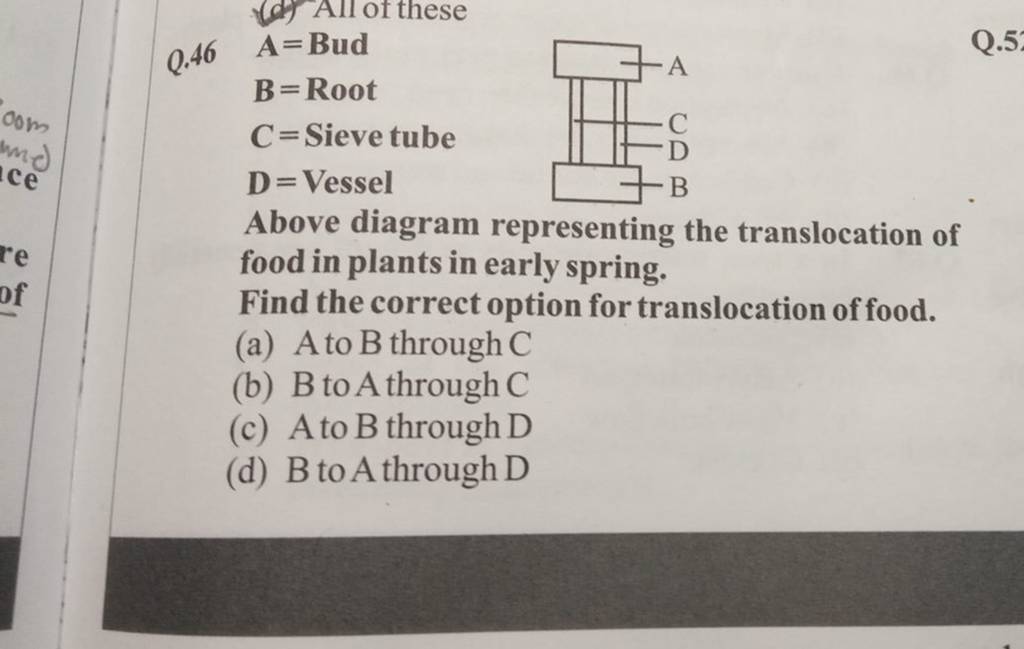Question
Question asked by Filo student

Q.46 Above diagram representing the translocation of food in plants in early spring. Find the correct option for translocation of food.
- A to through
- to through
- A to through
- B to A through
Found 8 tutors discussing this question
Discuss this question LIVE
11 mins ago

One destination to cover all your homework and assignment needs
Learn Practice Revision Succeed

Instant 1:1 help, 24x7
60, 000+ Expert tutors

Textbook solutions
Big idea maths, McGraw-Hill Education etc

Essay review
Get expert feedback on your essay

Schedule classes
High dosage tutoring from Dedicated 3 experts
Practice more questions on Plant Physiology
Question 4
Easy
Views: 5,604
Students who ask this question also asked
Question 1
Views: 5,982
Question 2
Views: 5,623
Question 3
Views: 5,666
Question 4
Views: 5,487


Stuck on the question or explanation?
Connect with our Biology tutors online and get step by step solution of this question.
231 students are taking LIVE classes
| Question Text | Q.46 Above diagram representing the translocation of food in plants in early spring. Find the correct option for translocation of food. |
| Updated On | Jan 31, 2023 |
| Topic | Plant Physiology |
| Subject | Biology |
| Class | Class 12 |
| Answer Type | Video solution: 1 |
| Upvotes | 123 |
| Avg. Video Duration | 4 min |



